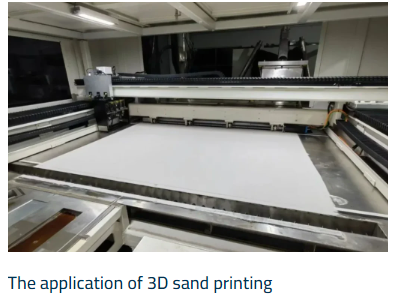Hell, 3D printing is changing the face of multiple industries, introducing new solutions to traditional manufacturing problems. 3D-Printing in Rapid Casting 3D printing is not just an additional process but also a supplementary technology which can rather rewrite the entire process of rapid casting.
Increased Design and Production Speeds
Rapid casting,Saving production time by 60% (faster design to production cycles) thanks to 3DP. For example, in the traditional way, the creation of molds for casting of metal parts can be a process lasting several weeks to several months depending on the complexity of the designs. Whereas the production of the crucially-important molds takes several weeks or even a full month, using 3D printing allows these molds to be created over the course of a few days. This is especially useful for industries such as automotive and aerospace, in which the advantages of quick prototyping and design iteration are priceless. For example, in some cases, companies have reported being able to reduce their other prototype development time by nearly 90% after converting to 3D printing with investment casting.
Mold Making: Cost Effective
The financial limitation of mold making in traditional casting processes has always been an obstacle, especially for small and medium enterprises. These costs are dramatically reduced with 3D printing. Utilizing resin or sand 3D printers to cast molds directly from digital files allows companies to save time and money on expensive tooling and manual labor from the traditional mold-making process. The saving of up to 50-70% reduction in mold production costs makes it a compelling choice for businesses with limited budgets or product design innovators.

Enhanced Geometric Complexity
The third of the advantages of 3D printing in rapid casting is that it is capable of creating more complex geometries than is possible with traditional methods. The technology provides for the design and manufacture of parts with intricate detail, undercuts and cavities with no extra cost. For example, some of the most sophisticated parts used in the aerospace industry may be cast to tight tolerances, thus allowing designers to develop more imaginative engineering solutions which cannot be produced using traditional metal forming.
Improved Material Utilization
Another large advantage 3D printing has over rapid casting is the utilization of materials. The traditional lost wax creates a large amount of waste during the mold-making and casting process. By nature, 3D printed molds are made up of the type of material that is only used in the amount needed to form the part making it inherently less resource-wasteful, and keeping raw material expenses in check with estimates of saving from 20-30% off on material costs.
Environment and Sustainability
In addition to cost and speed, sustainability is an important factor to consider in current manufacturing methods. Methods such as 3D printing optimize the environmental part of rapid casting by mostly reducing waste and the use of energy. Due to the accuracy of 3D printing, it uses less material and fewer resources for rework and corrections, thereby enabling a sustainable manufacturing process.
3D Printing not only changing, but it is changing the fast casting process itself creating faster, cheaper parts with the added benefit of part designs that are much more complex and sustainable. These are the attributes that manufacturers are set to expand many folds with 3D printing rapid casting, thus making a significant paradigm of how products are translated from a mere concept to practical reality.